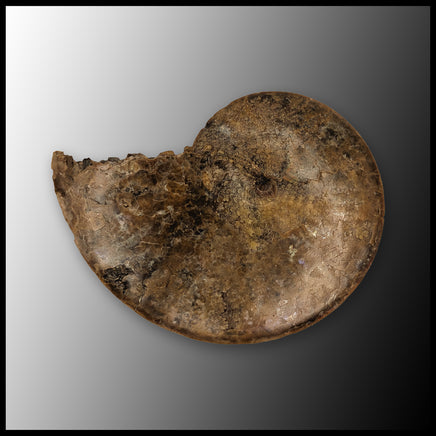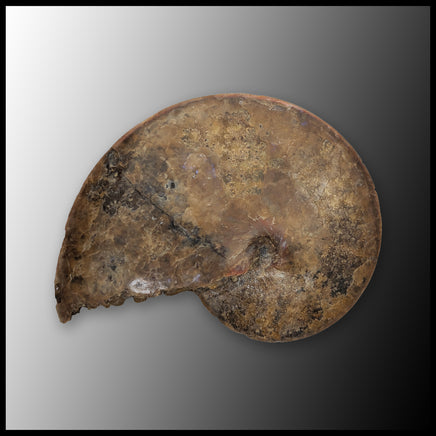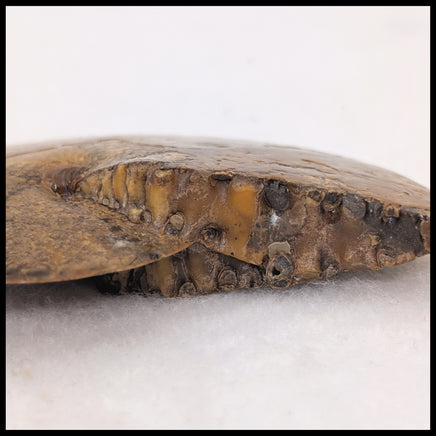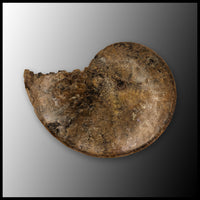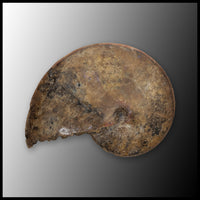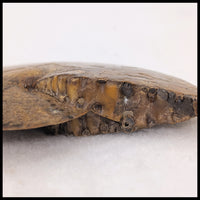This ammonite specimen comes from South Dakota in the Cretaceous period when the area was submerged by the Western Interior Seaway millions of years ago. They are typically preserved in hard concretions that must be carefully removed. The surface of this fossil shows complex suture patterns in overall shades of warm brown, with little spots of red or purple iridescence. It has a smooth outer surface with a sharp spine.
3" x 2.25"
58g
Sphenodiscus lenticularis
Fox Hills Formation
Ammonites are prehistoric nautilus related to the modern day nautilus, squid, and octopus family. These squid-like creatures lived in the sea between 65 - 415 millions years ago. Ammonites are called cephalopods because their heads and tentacles protruded out of the same opening; they grew by building larger chambers on their shells. Some species have been found at almost 6 feet in diameter, but they may have reached up to 9 feet!

